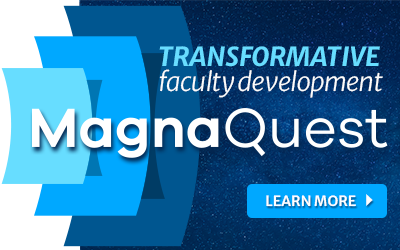What if blended learning could do more than utilize in-class time more efficiently and increase student interest in a course? What if it could actually boost retention?
Retention is a critical concern for schools such as Long Island University (LIU) Brooklyn that work with populations that include at-risk and underprepared students.
Melissa Antinori Berninger is the assistant writing program director and Thomas Peele is an associate professor of English at LIU. In an analysis of assessment data collected over the past six years, Berninger and Peele found that:
… 74 percent of incoming freshmen place into [English 14] the two-semester remedial writing sequence… Pass rates for English 14 are about 75 percent… For students who have to repeat the course, retention rates drop significantly, as they fall farther (sic) behind and face the possibility of running out of financial aid.
“Retention is a big concern,” says Berninger. “Our students are mostly first-generation, and we have a hefty price tag.” To address these problems, the English department began to explore the power of blended learning.
First steps into blended learning
Berninger notes that the English department’s steps into blended learning are modest and preliminary. “We’re using ‘blended learning’ broadly,” she says, explaining that they are just beginning to integrate technology into face-to-face classes.
LIU provides iPads for all its incoming students, and one of the most successful initiatives for the English department has been using these devices to change the way students think about their writing.
Using iBooks, students are required to complete a portfolio of work in their composition class. Because the final product is available via iBooks, the students have to confront the challenge of writing for an audience that goes beyond the classroom. “We spend a lot of time helping students develop visual literacy and think about an audience outside their composition professor,” Berninger says. “Students are more engaged if they produce a product seen by their friends and family.”
The visual component inherent in this project is also a valuable way to break up the amount of pure text students are required to produce and help them put it in context. “They engage in it a different way than they do with text,” Berninger says.
The English department is also working to integrate a variety of online tools into its curriculum. For example, it is experimenting with the use of nb (http://nb.mit.edu/welcome),a crowdsourced annotation service from MIT that allows students and faculty to “annotate course material online, either for yourself, or to discuss it with the class,” as it describes itself on its website. The site has a robust FAQ list and a set of forums for users, making it easy to learn. “We’re slowly integrating things like that,” Berninger says.
The university is looking at other ways to allow students to use true blended courses to boost preparation for college. This year, students who test into a developmental English course can take a summer blended course and then retest so they are able to start the school year in college-level English.
Students who have failed developmental English may also have the chance to use a true blended course as part of repeating the class. Berninger says, “[We plan to offer] a blended course for students who failed their remedial writing course in Spring 2013. Run over four to six weeks in the summer, the course will give students a chance to retake the course and progress to first-year composition. The blended component will not only offer students crucial writing practice, it will also allow us to experiment with blended instruction in the remedial writing classroom as we consider proposals to expand such instruction into the regular semester.”
The English department is not the only department pursuing blended learning. The mathematics department already offers some courses in blended learning format using Aleks, a McGraw-Hill product (www.aleks.com).
Although the data the English department has currently amassed is largely qualitative, they believe these steps toward incorporating blended learning will have a positive impact on retention, along with allowing them to develop blended curricula, train faculty in the skills they will need in the blended classroom, train students to use technology, recruit students into programs, and encourage the institution to develop necessary policies, procedures, and support for future blended endeavors.



